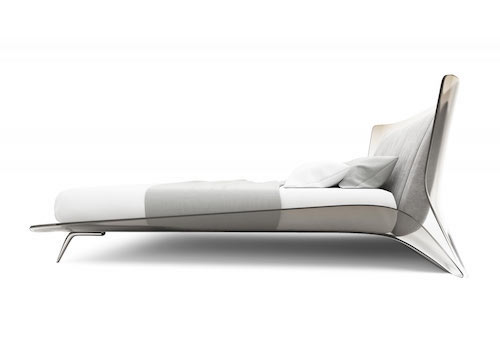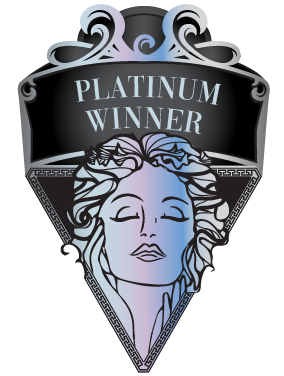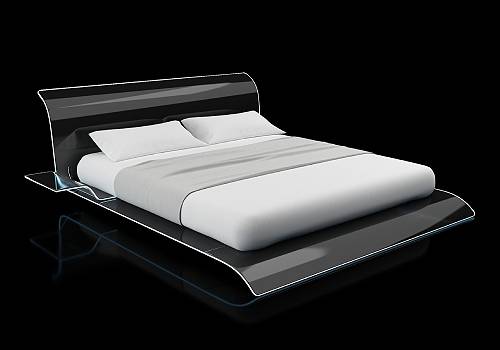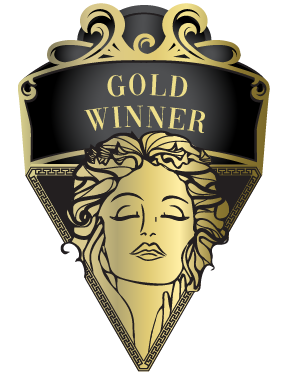
Interview
Matthew Arquette
1 Please give us a brief bio of yourself and your design background.
For me, furniture design is an inexhaustible passion that has been a source of constant inspiration and fulfilment for decades. Since completing my studies and earning my Bachelor of Arts in Furniture Design, I have been fortunate enough to enjoy a successful and enriching career for more than 20 years. Through all the ups and downs of that journey, my love for design has only grown stronger, and I have learned to push the boundaries of my artistic vision. I feel truly blessed to have been given the opportunity to work on a variety of extraordinary projects and collaborate with so many gifted and inspiring individuals along the way. Today, I find myself in a place where I can choose to take part in a wide range of exciting projects and explore new creative possibilities. I am truly excited to see where my passion for furniture design will take me in the future, and I am eager to continue contributing to the vibrant and dynamic world of design.
2 What made you become/why did you choose to become a designer/artist?
As a conscientious member of society and a mindful consumer, I've always been committed to improving myself and the world around me. My guiding principle has always been to approach life with a mindset of constant learning, observation, experimentation, and contribution. This has driven me to explore and discover the intricacies and marvels of our world, and as I continue to draw inspiration from them, I'm always eager to learn more. However, I believe that with innovation comes responsibility, and it's imperative to explore environmentally sustainable alternatives within the furniture design industry. By harnessing the potential of green materials and utilizing ecological techniques, I'm driven to challenge the status quo, pushing the limits of existing practices and exploring new possibilities. This is the essence of my vision for furniture design, and it's what makes me excited to create every day.
3 Tell us more about your business/company, job profile, and what you do.
Throughout my 20 years in furniture design, working with a diverse range of clients and managing their varying requirements has been an experience that has challenged and honed my creative skills. Every project has presented its own set of unique obstacles, which allowed me to explore new creative approaches and expand my expertise. Beyond just creating beautiful furniture, my ultimate objective has always been to influence the future of design, pushing the boundaries and redefining what's possible. It's an ambitious goal, but one that I'm passionate about and one that drives me towards exploring new avenues of creativity and design. With every project, I'm energised by the opportunity to make a meaningful contribution not only to the world of furniture but to the wider creative ecosystem.
4 What does “design” mean to you?
For me, design is a journey of exploration, where every project is an opportunity to experiment with new ideas and find the perfect balance between functionality and style. It's the process of taking a concept and bringing it to life through creativity and innovation. Design is not just about creating products and services, but about enhancing the human experience and adding value to life.
5 What’s your favorite kind of design and why?
I am passionate about environmental design, a specialised field that is aimed at improving the quality of both natural and constructed environments. This hybrid approach combines aspects of architecture and landscaping in an effort to shape the surrounding environment into something that is both functional and aesthetically pleasing. I take great satisfaction in being able to think outside the box and come up with innovative solutions to everyday problems, all while keeping our planet healthy and vibrant. As an alternative, I also enjoy exploring alternative modern design, which gives me the opportunity to blend traditional and contemporary styles, incorporating a range of textures, patterns, and bold colours. My overarching goal is to use my creativity to effect positive change in my community and leave a lasting legacy.
6 To you, what makes a “good” design?
In my opinion, a good design is one that possesses three core traits: functionality, timeless aesthetics, and adaptability. It should be able to solve a problem, whether it
7 Describe your design style and its main characteristics.
I would describe my design style as a modernist approach with a touch of personality and warmth. I prioritise clean and simple shapes and lines, but I like to add a personal touch to my designs as well. I believe that function is key, but that doesn't mean it can't be elegant and visually appealing. I aim to create spaces that look inviting while still being practical and comfortable. I often use a mixture of light and dark colours, and I enjoy playing with textures and patterns to create balance and interest. I also prioritise sustainability and energy efficiency in my designs. I constantly strive for innovation, looking for ways to improve the durability and environmental impact of my work. Overall, my design philosophy is centred on creating spaces that are both beautiful and liveable, with a focus on the needs and values of my clients and the world around us.
8 Tell us about your design process.
My design process is rooted in thorough investigation and a deep understanding of the objectives and aspirations. I start with research and analysis to uncover any potential challenges and opportunities. Then, I like to ideate and explore a range of design concepts before narrowing them down to a few promising options. While I consider regulations and relevant environmental factors, I remain focused on the end goal: creating a functional and aesthetically pleasing solution that serves goal. Throughout the process, I collaborate to ensure vision is fully realised. For me, bringing a design to life involves carefully balancing colour, texture, and form, ultimately creating a cohesive whole. I diligently fine-tune and improve my concepts until the finished product reflects my objectives, leaving nothing to chance.
9 Do you think your country and its cultural heritage has an impact on your design process?
My design process is heavily influenced by my cultural heritage and my country of origin. I grew up in a region with a rich history and cultural tradition, which has deeply influenced my aesthetic choices and design philosophy. I believe that cultural context plays an essential role in design, and it has taught me the importance of respecting and valuing cultural diversity. My country
10 Congratulations! As the winner of the 2023 MUSE Design Awards, what does it mean to you and your company and team to receive this award distinction?
Winning the 2023 MUSE Design Awards is a proud moment for me. It's an affirmation of my commitment to designing innovative and functional products that meet the needs of our society. I strive to create designs that are not only aesthetically pleasing but also sustainable and forward-thinking. The award gives me the motivation to continue to drive creativity to new heights and sets the bar high for the quality of work I deliver. Moreover, this award is a reflection of my hard work and dedication to ensuring that my designs are of the highest caliber and fit to inspire both the creative community and the platforms we share. This recognition is a badge of honor for me, and I feel motivated every day to continue producing designs that push the boundaries and create positive impacts in the world.
11 Can you explain a bit about the winning work you entered into the 2023 MUSE Design Awards, and why you chose to enter this project?
The winning project that I entered into the 2023 MUSE Design Awards is Moana, the hybrid sleep solution, a product designed to promote a healthy and sustainable lifestyle. The materials used in the product reflect a deep understanding of the environment and the natural world. The lucite subframe complements the design, giving the product a sleek and modern look while being eco-friendly. The textiles composed of sand are inspired by the windswept dunes of deserts and their ever-changing reforming and reshaping patterns. This not only adds a unique aesthetic to the design but also allows the product to be fully recyclable, returning back to the earth after use to reduce the carbon footprint. Moana doesn't just cater to physical needs but also prioritises mental well-being. The design concept of Moana aims to create a sleep oasis that promotes regeneration and relaxation. Using environmentally sustainable materials, it symbolises the importance of creating products that are not only functional but also align with the values of protecting the planet. Moana represents a synthesis of creativity, innovation, and responsible design that inspires people to live more healthily and attentively in a world that demands more sustainable ways of living.
12 What was the biggest challenge with this project?
As the designer of Moana, the hybrid sleep solution, I faced several challenges in the process of developing this product. One of the main challenges was finding the right materials that were both sustainable and aligned with the design vision. I had to consider the environmental impact and the longevity of the materials whilst ensuring that they met the functional and aesthetic requirements of the product. Another challenge was combining these materials in a way that brought my vision to life while ensuring that the product was practical, aesthetically pleasing and fully recyclable. The use of sand-based textiles was a unique concept that required me to experiment with different materials and techniques to achieve a suitable result. Creating an environmentally sustainable product that remained functional, appealing and also served as an oasis of relaxation in its design was another challenge. I wanted the product to be eco-friendly, practical yet unique and holistic in its approach to promoting regeneration and relaxation. Extensive research and experimentation in unconventional product production was needed in developing a product like Moana. Overall, developing Moana required significant creative problem-solving and attention to detail, but it was a rewarding challenge that inspired me to push boundaries in conventional design and production methods.
13 How has winning an Award developed your practice/career?
Winning an award creates a ripple effect that positively impacts several aspects of my practice and career. Firstly, it provides recognition of the hard work and dedication that I put into my designs, not only validating the effort put towards the winning project but also establishing credibility for my future work. The positive exposure from the award also helps increase the exposure of my brand in the design industry, expanding my clientele base and creating new opportunities for professional growth. Additionally, receiving an award distinguishes my work from competitors, setting me apart as a leading designer in my field. This credential increases the perceived value of my services, creating a sense of trust with clients who see my work as a reflection of quality. Most importantly, winning awards has not only helped raise my personal and professional profile but has also pushed me to continuously innovate and improve my design practice while driving me to create more inspiring work in the future.
14 What are your top three (3) favorite things about our industry?
As a furniture designer, I have a deep appreciation for the artistry and creativity that goes into designing and creating the perfect piece that balances form and function. The challenge of discovering the perfect (ingredients) materials, textures, and colours, ignites my passion for experimenting with a wide array of design possibilities. I cherish the opportunity to collaborate with clients and create custom pieces that reflect their personal aesthetics and style.. In addition, I take great pride in creating eco-friendly and sustainable furniture that contributes to environmental preservation and protection. By selecting sustainable materials, minimising waste and emissions, and reducing the carbon footprint of our manufacturing processes, I can make a positive impact on our environment. This philosophy is integral to my practice and drives me to continually enhance my knowledge in sustainable design by practising a stringent approach implementing the adherence to green design principles. At the core of my profession, I aspire to create furniture that transcends the very definition of aesthetics and functionality, combining sheer artistry with practical functionality. It is a source of pride to be part of the larger furniture community in our pursuit of promoting beauty, functionality, and environmental consciousness.
15 What makes your country specifically, unique in the design industry?
As a furniture designer hailing from the UK, my creative process is infused with diverse cultural influences that reflect the country's rich history of craftsmanship. The traditional English styles and modern practices, embodied in the cultural heritage of my homeland, serve as a foundation for much of my work. At the same time, I aim to incorporate contemporary and innovative elements, creating pieces that blend the traditional with the new to convey a timeless quality. Beyond my personal aesthetic, I am committed to sustainability and the environment. Sustainability is at the forefront of the UK design industry, and I believe it is our responsibility to create eco-friendly and sustainable furniture designs. I take pride in using recycled materials and adopting energy-efficient processes to reduce the environmental impact of my designs without compromising on the aesthetic. The UK is renowned for its diverse design styles, from classic English craftsmanship to sleek and modern designs. This diversity allows me to experiment and push the boundaries of furniture design, creating pieces that are both innovative and culturally meaningful. As a designer from the UK, I am inspired by the country's rich cultural heritage, its commitment to sustainability and the environment, and the endless possibilities for creativity in furniture design.
16 Where do you see the evolution of design industry going over the next 5-10 years?
Looking ahead to the next five to ten years, I anticipate the design industry undergoing a significant evolution. With the rapid advances in technology, the industry will embrace the possibilities that AI and machine learning offer, shaping the future through data-driven designs. The development of tools such as 3D printing and virtual reality has revolutionised the design process as it aids in creating prototypes quickly and accurately. In terms of design trends, sustainability and eco-friendliness will continue to take centre stage as more environmental concerns arise. The focus on creating designs that minimise the negative impact on the environment and prioritizing recycled materials is a trend that is here to stay. We will continue to see more collaborations between designers, architects, and engineers, leading to more holistic design solutions that blend aesthetics, functionality, and environmental stewardship. Another major shift is the rise of empathy in design. Creating designs that empathise with and meet the unique needs of underrepresented populations such as people with physical or cognitive disabilities or seniors, for example, will take on more significance. The industry will embrace user-centred design and make products that are accessible to all, regardless of age or ability. Lastly, the industry will head in the direction of more customisation; personalised designs that cater to the individual taste of each buyer. With the growing understanding of the psychological impact of design, products that evoke personal connections and emotions will be in high demand. Customisation will be at the forefront of making designs with individual flair, reflecting the unique identity of each product's users. In conclusion, the design industry will continue to evolve, incorporating new technologies and responding to the needs of a rapidly changing world while being cognizant of its role in sustainability.
17 If you were a student entering this industry or an aspiring MUSE Design Awards submitter, what advice would you give them?
If you
18 What resources would you recommend to someone who wants to improve their skills in the design industry?
To thrive in the design industry, one must continuously challenge oneself to improve and learn new skills. Keeping up-to-date with the emerging trends and avant-garde technologies is crucial in staying ahead in the industry. Hence, I recommend reading industry publications such as online resources, blogs, and magazines. These resources will inform you about the latest developments in the field. Professional networking is equally important in the world of design. Attending design conferences and industry events is an excellent way to meet other creative professionals, forge new partnerships and tap into a wealth of collective experience. Workshops, seminars, and additional education opportunities can provide guidance from more experienced professionals on how to hone your skills and explore novel ideas. Mentorships and apprenticeships are another way to enhance skills. The privilege of learning from a professional mentor can expose you to immense industry knowledge, enhancing your understanding of design principles, build your practical experience, and perfect your techniques. It
19 Tell us something you have never told anyone else.
I am very particular about the use of coat hangers; it's almost like a compulsion for me. I tend to obsess over their size and consistency in use. I prefer to have all my hangers of the same size, shape, and type, as it helps me maintain a sense of orderliness and tidiness in my closet. The uniformity in the arrangement of my clothes gives me a sense of calm and control. I often find myself rearranging them to ensure they are placed in a perfect sequence. Though I acknowledge that this is a rather trivial matter to concern oneself with, it is just one of the manifestations of my personality trait that I have learned to accept and manage over time.
20 Who has inspired you in your life and why?
I have been fortunate to have a mother who has been more than a parent; she has been a mentor, guide, and a friend. She has been my rock through thick and thin and has always stood by me through every achievement and failure, providing words of wisdom and encouragement. Her lessons on the significance of hard work and determination have been instrumental in shaping my character, and I attribute my success to her unwavering support. The kindness and empathy she displays toward others have been a source of inspiration for me, and I strive to emulate her in every interaction. Her selflessness and unconditional love have taught me the true meaning of familial bonds and the importance of giving back to society. I am grateful for having her as my mother, and I will continue to cherish the invaluable lessons she has imparted to me throughout my life.
21 What is your key to success? Any parting words of wisdom?
My key to any success anywhere is simply hard work and dedication. Life is full of challenges, and it is easy to give up when things get tough. However, I believe that if you stay focused on your goals and put in the necessary effort, you will eventually reach your desired outcomes. Additionally, it is important to remain open-minded and adapt to changing circumstances. It is not always easy to do, but being flexible and willing to learn can open up new opportunities that you may not have known existed. Finally, it is essential to never forget the power of optimism and the importance of having a positive attitude. Life is too short to be stressed down by negativity and doubt, so no matter what challenges come your way, remain confident in yourself and your abilities. With a little hard work, dedication, and a positive outlook, anything can be achieved.
22 Do you have anything else you would like to add to the interview?
As a MUSE Design Awards winner, I feel incredibly grateful to the MUSE Design Awards for their unwavering support of the creative industry and their commitment to inspiring innovation among designers. Being recognized by the MUSE Design Awards has been instrumental in elevating emerging and established designers alike, providing a solid platform to showcase their work and receive recognition. The MUSE Design Awards has been an instrumental driving force behind promoting excellence in design and inspired me to produce exceptional work. I am honored to have benefited from the fantastic opportunities and resources they offer, and I am grateful for their continued support of the creative community. Thank you for fueling our passion and drive to push boundaries and achieve new heights in design.



